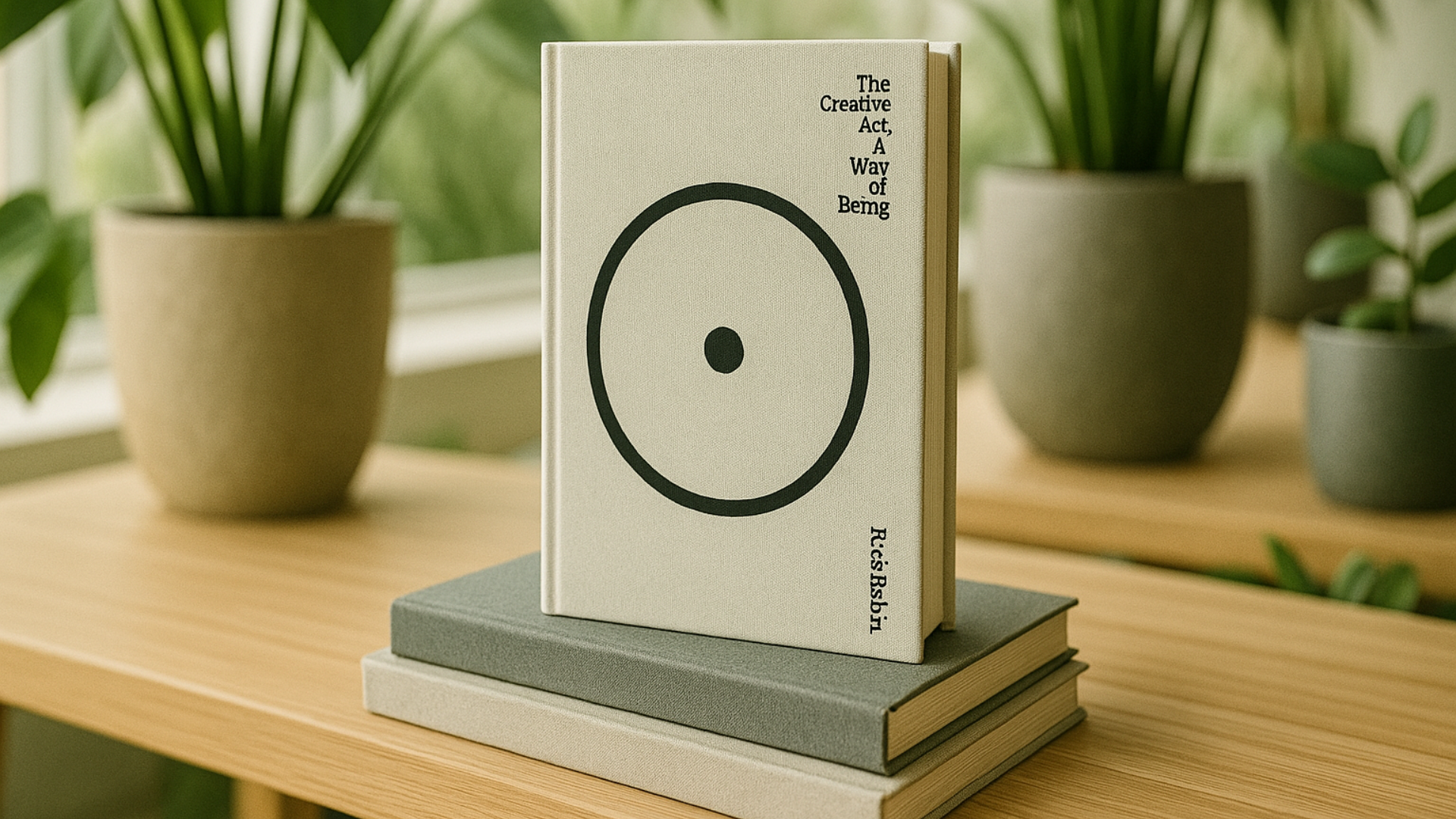Quieting the Noise: Rick Rubin on Creative Presence

Book Review: The Creative Act: A Way of Being by Rick Rubin
A contemplative invitation to embrace creativity as a way of perceiving and participating in life
In The Creative Act, legendary music producer Rick Rubin offers something far more spacious than a how-to guide for making art. He invites us into a practice of presence. Through 78 short reflections, Rubin dissolves the boundaries between life and creativity, art and awareness. His message is both simple and profound. Creativity is not a profession. It is a way of noticing, tuning in, and allowing something to arise.
This is not a book for artists alone. It is for anyone who has ever felt the quiet pull toward expression or the ache of feeling creatively blocked. Rubin gently opens a door to another way of living. One that feels more attuned, less rushed, and deeply connected to the world around and within us.
What the book promises
The Creative Act promises a shift in how we understand and access creativity. Rather than focusing on output or performance, Rubin presents creativity as a natural human capacity. It is something innate and available to all of us, not confined to galleries or studios. His reflections explore how we can develop receptivity and presence. By doing so, we allow creative energy to move through us.
Rubin does not offer a structured program or a set of techniques. Instead, he shares open-ended insights that encourage a more intuitive and aware approach to creating. The promise is not clarity through direction, but through openness and stillness.
What the book delivers
Rubin delivers on his promise, though not in a conventional sense. There are no exercises, worksheets, or productivity hacks. What he offers is a philosophical and emotional approach to creative living. Each of the 78 chapters is a short meditation on a theme such as “Beginner’s Mind,” “Patience,” “Tuning In,” or “The Source of Creativity.”
Rather than teaching us how to create, Rubin encourages us to listen more closely. He invites us to slow down and notice the subtle impressions we often miss. This approach may feel unfamiliar to those used to structure and output. However, for anyone who feels disconnected from their inner voice, this way of thinking can be both healing and freeing.
The tone is compassionate and unhurried. Rubin doesn’t tell us what to do. He creates space for our own discoveries to surface.
Style and structure
The writing is minimalist, reflective, and calm. Rubin uses short, intentional sentences that feel more like pauses than instructions. The rhythm is gentle and measured, encouraging us to take our time. Many chapters are just a page or two long. This makes the book easy to pick up in quiet moments.
There is no linear progression. Readers can move through it in any order. This structure reflects the creative process itself. It is non-linear, often uncertain, and full of returns and restarts. The layout of the book reinforces this feeling of space and quiet. White space on the page allows the reader to breathe and reflect. It supports the invitation to pause and stay present.
Where the book shines
One of the book’s greatest strengths is its ability to normalize creative struggle. Rubin does not frame resistance or doubt as something to conquer. He acknowledges them as part of the process. This perspective may be especially comforting for women carrying emotional labour, perfectionism, or burnout. It gives permission to be in process without needing to perform or produce.
Rubin also speaks with clarity about the unseen parts of creativity. He explores ideas like intuition, timing, and energetic awareness with sensitivity. While some of these concepts lean toward the spiritual, his language stays grounded in experience. He never claims to know the truth, only what he has observed.
Rather than centring himself, Rubin steps aside. His voice is present, but never dominant. He creates space for the reader’s own thoughts and instincts to emerge. This is rare, and it makes the book feel generous and respectful.
Light limitations
This is not a practical or instructional book. Readers looking for steps to follow or techniques to apply may find it frustrating. There are few concrete examples and no defined outcomes. The book prioritizes being over doing. For those used to achieving through structure, this approach may feel unfamiliar at first.
Some of the vocabulary includes references to “the universe,” “energy,” or “vibration,” which may not connect with all readers. Rubin never pushes a belief system. Still, those who prefer evidence-based or structured approaches might wish for a bit more anchoring.
That said, the openness is intentional. The book is not meant to provide conclusions. It is meant to offer space and possibility.
Final thoughts
The Creative Act is less about how to create and more about how to live. Rubin reminds us that creativity is not something reserved for artists. It is a way of engaging with the world, of noticing more, and of trusting the quiet impressions that often go unheard.
For women in STEM or leadership roles who may be feeling overwhelmed, depleted, or creatively adrift, this book offers a gentle reconnection. It does not ask for effort. It asks for presence. Rubin’s reflections give us permission to stop striving and start listening.
This is a book to keep nearby. Not to finish quickly, but to return to slowly. It asks nothing from us, yet it gives a great deal.
Highly recommended for readers seeking quiet reconnection with their creativity. Especially helpful for those navigating burnout, transition, or a longing to feel more attuned to themselves and the world around them.